As I mentioned in the last post, today was such a full day that I am devoting two posts to it. So here is Part II.
Quinta da Regaleira
I don’t have the words to describe this, so I am borrowing them from two websites.
First, from https://www.regaleira.pt/en/quinta-da-regaleira:
“Sintra was, in the 19th century, one of the first cradles of romantic architecture in Europe. Its own climate and the consequent nature attracted the eyes of those who, sensitized by the landscape, dared to retouch it with a stunning architecture in an edenic harmony conducive to the contemplation of the beautiful and sublime.
It is in this picturesque setting that we find at the outskirts of Sintra historic center, the Quinta da Regaleira. Designed and built in the late 1800s, it reflects the sensibility and cultural, philosophical and scientific interests of the principal owner, António Augusto de Carvalho Monteiro (1848-1920), together with the virtuosity of the Italian architect and scenographer Luigi Manini (1848-1936). The culture and creativity of these two personalities resulted in an eclectic-revivalist architectural ensemble, with a particular focus on the Manueline, Renaissance, Medieval and Classical styles.”
And from https://visitsintra.travel/en/visit/monuments/palace-and-quinta-da-regaleira:
“With the aid of Italian architect Luigi Manini, Carvalho Monteiro transformed the 4 hectare estate into a palace surrounded by lush gardens, lakes, caves, and enigmatic constructions, places that hide alchemical meanings such as those evoked by Freemasonry, the Templars, and the Rose-cross. He shapes the space with mixed lines, evoking Romanesque, Gothic, Renaissance and Manueline architecture.
Quinta da Regaleira must be experienced. It is not enough to hear about its memory, landscape and mysteries. You must get to know the estate, contemplate the scenery among the gardens and constructions, admire the Palace, a true philosophical mansion of alchemical inspiration, and walk through the exotic park and feel its spirit.”
The palace contains five floors (a ground floor, three upper floors, and a basement). The ground floor consists of a series of hallways that all connect the living room, dining room, billiards room, balcony, some smaller rooms, and several stairways. In turn, the first upper floor contains bedrooms and a dressing room. The second upper floor contains Carvalho Monteiro’s office, and the bedrooms of female servants. The third upper floor contains the ironing room and a smaller room with access to a terrace. Finally, the basement contains the male servants’ bedrooms, the kitchen (which featured an elevator for lifting food to the ground floor), and storage rooms.
One thing we were not able to see was The “Initiation Well.” It isn’t actually a well: This iconic 98-foot tower resembles a well but lacks any water source. Instead, it serves as a symbolic descent, with a spiral staircase leading down nine levels, representing Dante’s nine circles of Hell. Some believe it was used for initiation rituals by secret societies. We missed this due to the length of the line to view it.
I would say that the exterior and the grounds are the real appeal here. (We didn’t see much of the interior.) Most of this post will focus on them, and we didn’t walk anywhere near all of the grounds.
If I were to return, I would go here first thing in the morning and spend four hours here! Since we were packing so much into one day, we didn’t really do this particular visit justice. (The challenge in this area is that many things are “go early in the day to avoid crowds” types of things. . . )
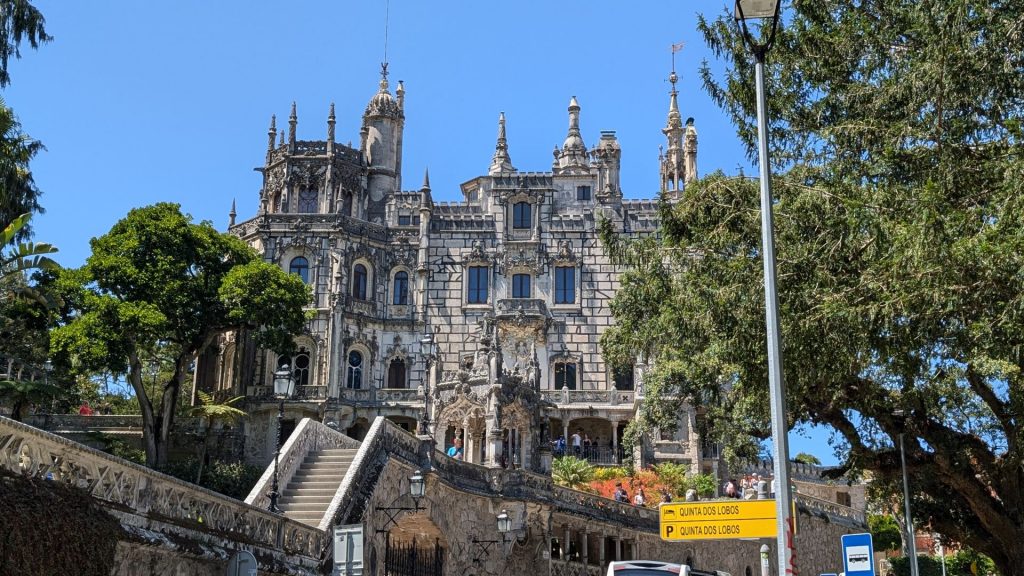

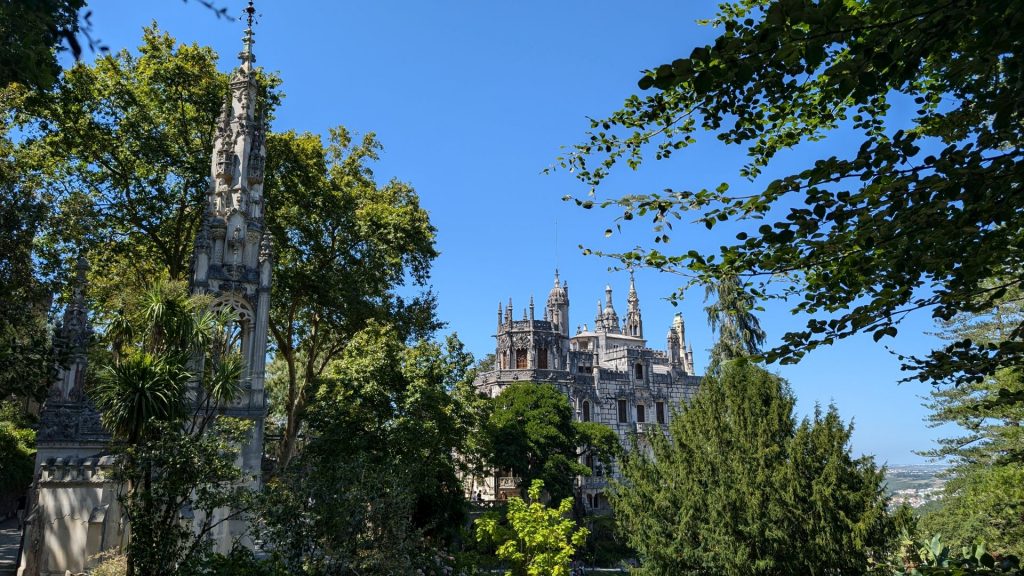

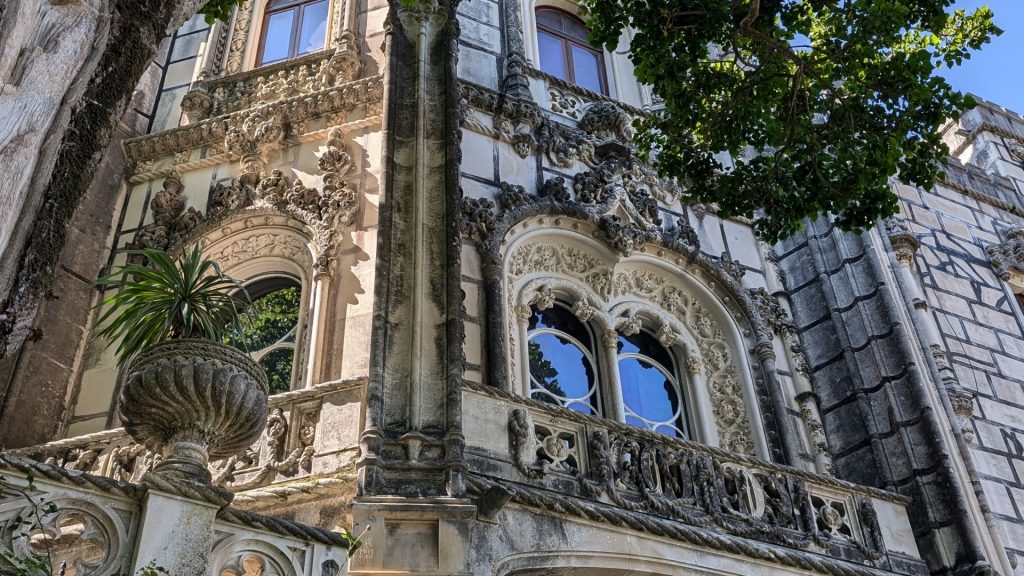







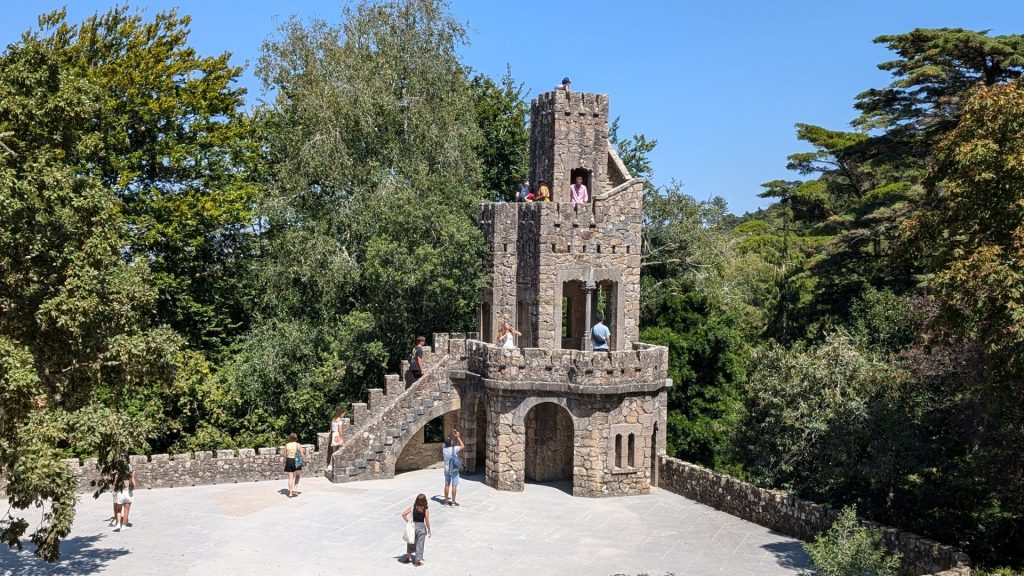
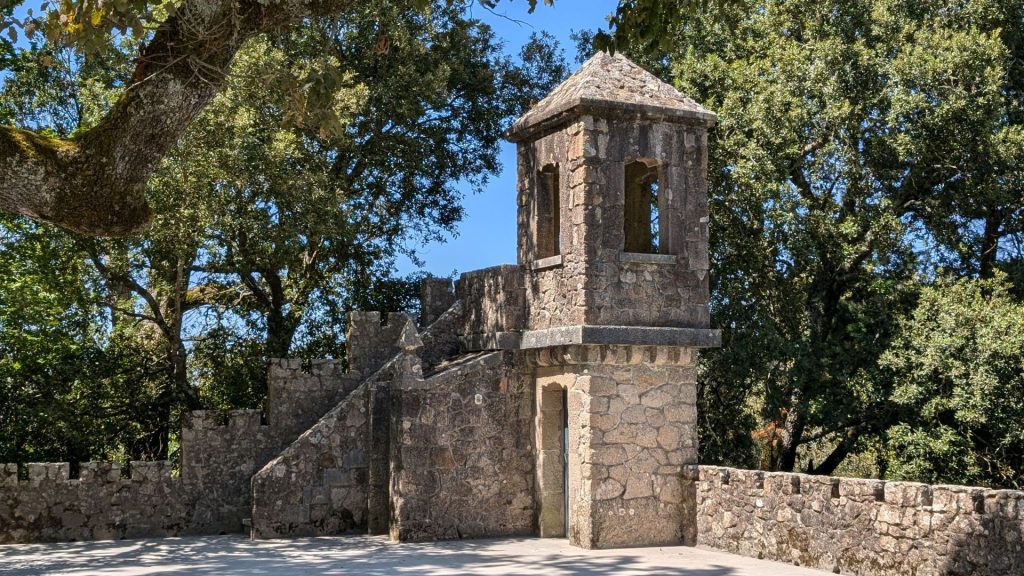
Let’s look at some of the interior rooms for a sec. I didn’t do a good job of noting which rooms these are, but they are amazing so I am sharing them anyway!

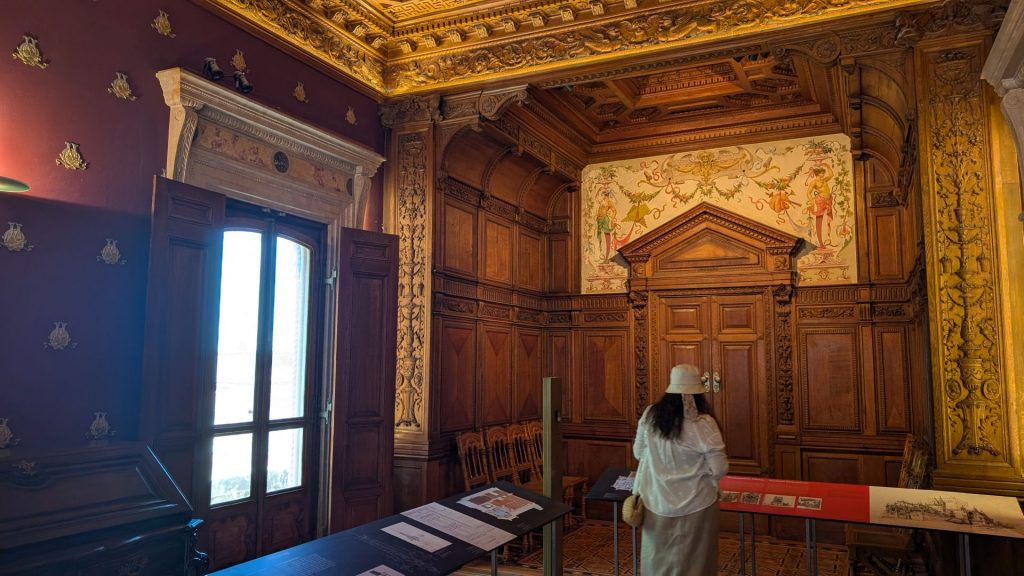



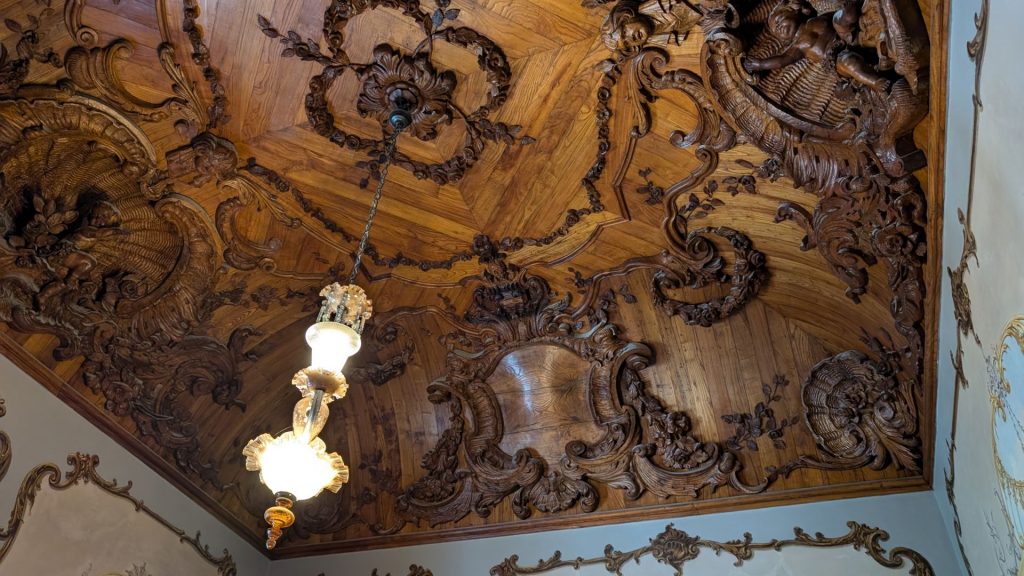
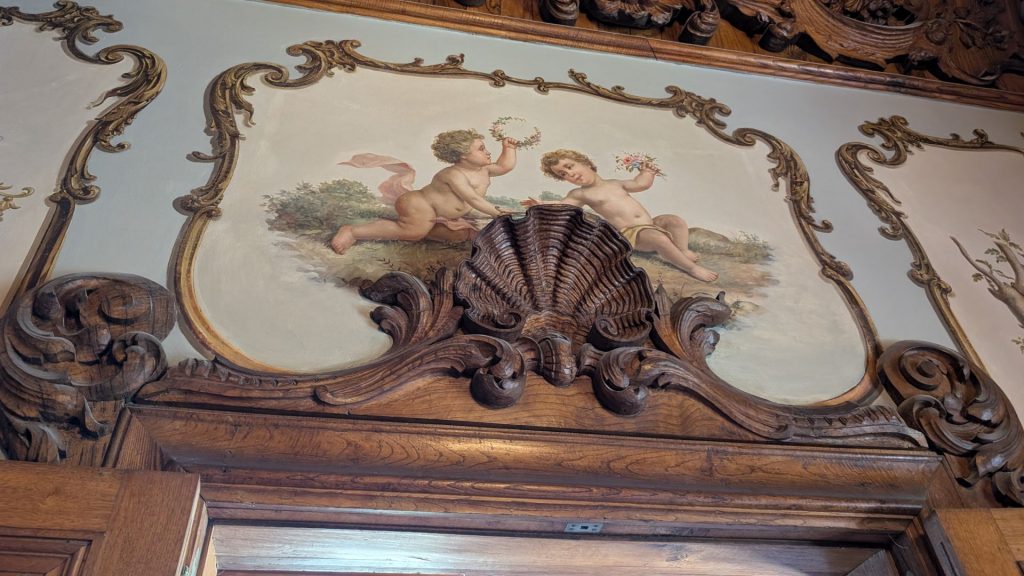



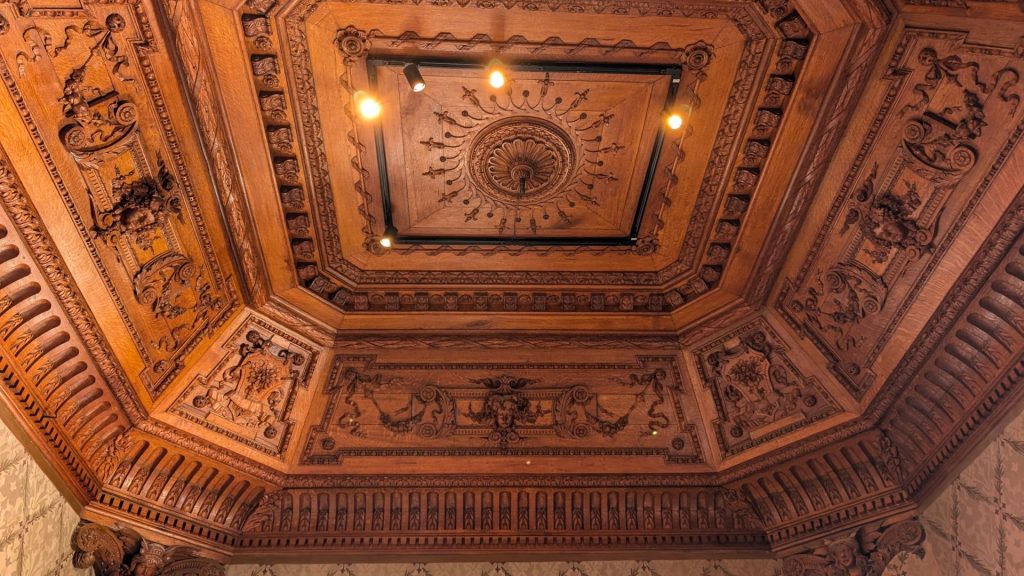
Back outside. . .
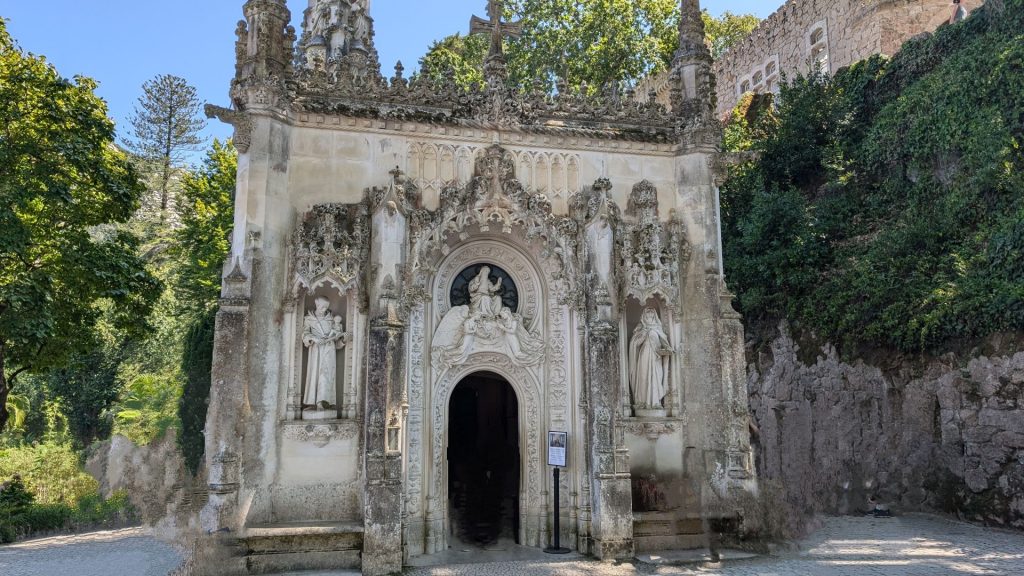


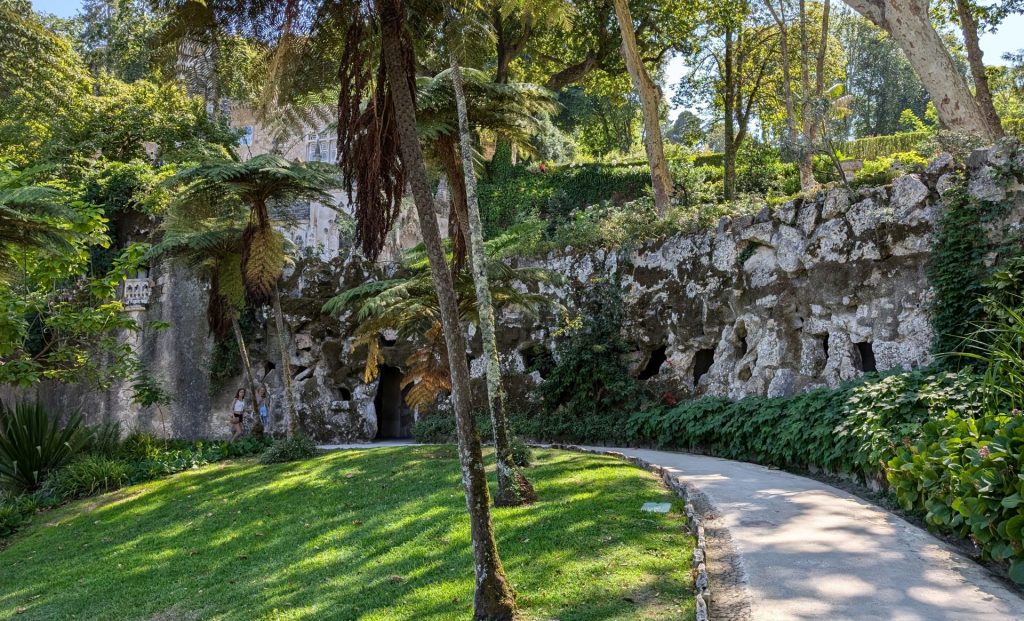


Castle of the Moors on the nearby hill.
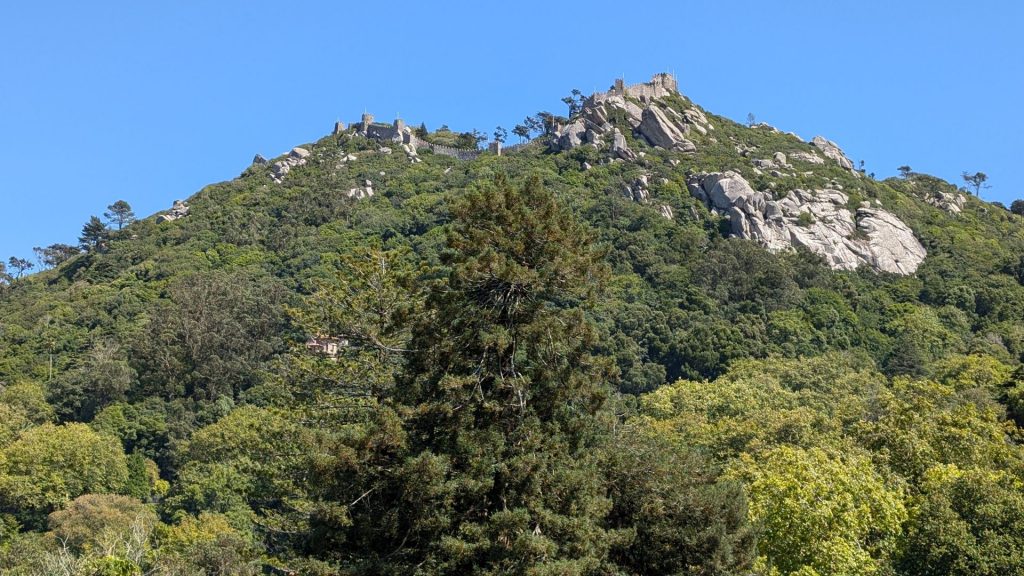
The information referenced a “waterfall” on the grounds. I found it. Hee hee. Not much of a fall.

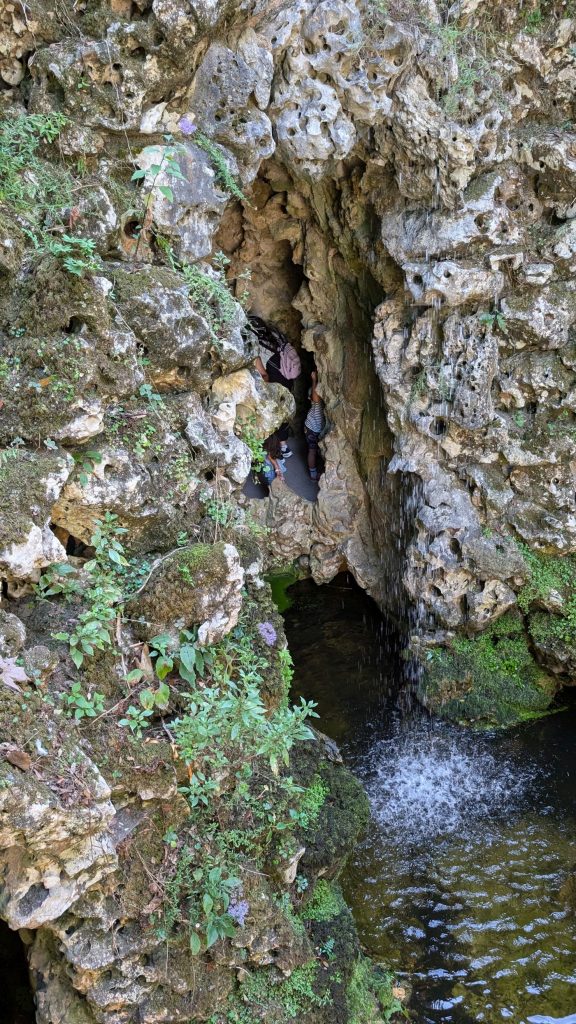





It was time to go to our last stop of the day. We were quite hot and tired by this time, but determined to see this last site as it looked very pretty!
Park and Palace of Monserrate
According to legend, there was a chapel dedicated to Virgin Mary built by Afonso Henriques after the reconquest of Sintra (c. 1093). On its ruins another chapel dedicated to Our Lady of Monserrate was constructed on the top of the hill in 1540. The estate was then owned by Hospital Real de Todos os Santos, Lisbon. In the 17th century possession of the property was taken by the Mello e Castro family but after the 1755 Lisbon earthquake the farmhouse became unlivable.
An English merchant named Gerard de Visme rented the farm in 1789 and built a neo-Gothic house over the ruins of the chapel. In 1793-1794 the estate was subleased by William Thomas Beckford, who carried out work on the palace, and began creating a landscaped garden.
In 1809, the Monserrate Palace was visited by Lord Byron, the Anglo-Scottish poet and leading figure of the Romantic Movement. The sublime aspect of the property was a source of inspiration to the poet, who mentioned the beauty of Monserrate in Childe Harold’s Pilgrimage.
In 1863, following a succession of owners, histories, restorations and abandonments, Francis Cook, a British trader and art collector, became the owner of the Estate of Monserrate and the 1st Viscount of Monserrate. Cook started to work with the architect James Knowles on the remains of the house built by de Visme. The design was influenced by Romanticism and Mudéjar Moorish Revival architecture with neo-Gothic elements. The eclecticism is a fine example of Sintra Romanticism. The Islamic architectural influence is in reference to when the region was a part of the wider Muslim Gharb Al-Andalus until the 13th century.
The property and hunting grounds were acquired by the Portuguese state in 1949.
The Park
Francis Cook, together with the landscape painter William Stockdale, the botanist William Nevill and the master gardener James Burt, created the contrasting scenarios that are to be found in the park, where narrow winding footpaths intertwine amongst ruins, nooks and crannies, waterfalls and lakes, in what, at first sight, seems to be an apparently disordered fashion.
The park represents one of the most notable Romanticism inspired landscapes in Portugal. The construction of the gardens exploited the Mountain’s microclimate to create a magnificent park. Spontaneously growing species from Portugal (arbutus-trees, holly trees, cork oak-trees, amongst others) combine with others originating from all of the world’s five continents, inviting visitors to enjoy a stroll through plant varieties of the whole world, ranging from such countries as Australia to Mexico and Japan. Altogether, there are more than 3,000 species.
There wasn’t much to see inside so, again, most of our pictures are of the exterior of the building and the grounds.
The first view is just a peek of the building between the trees. But what a view!


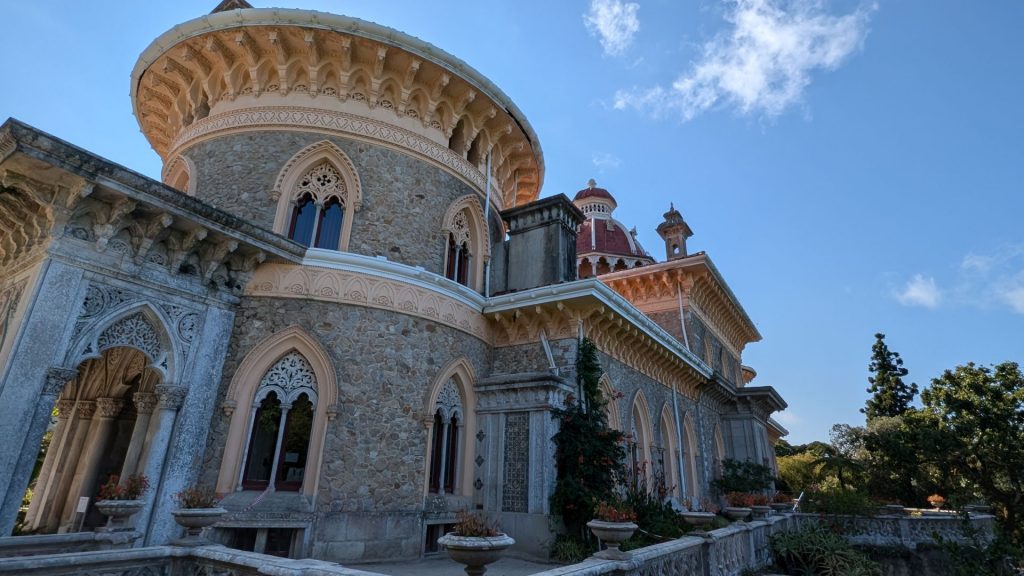


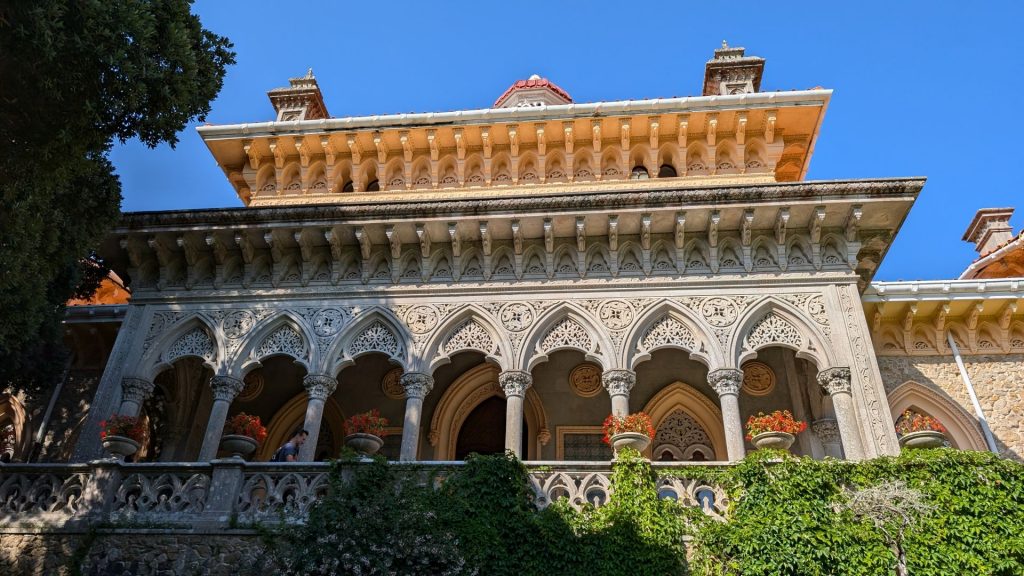

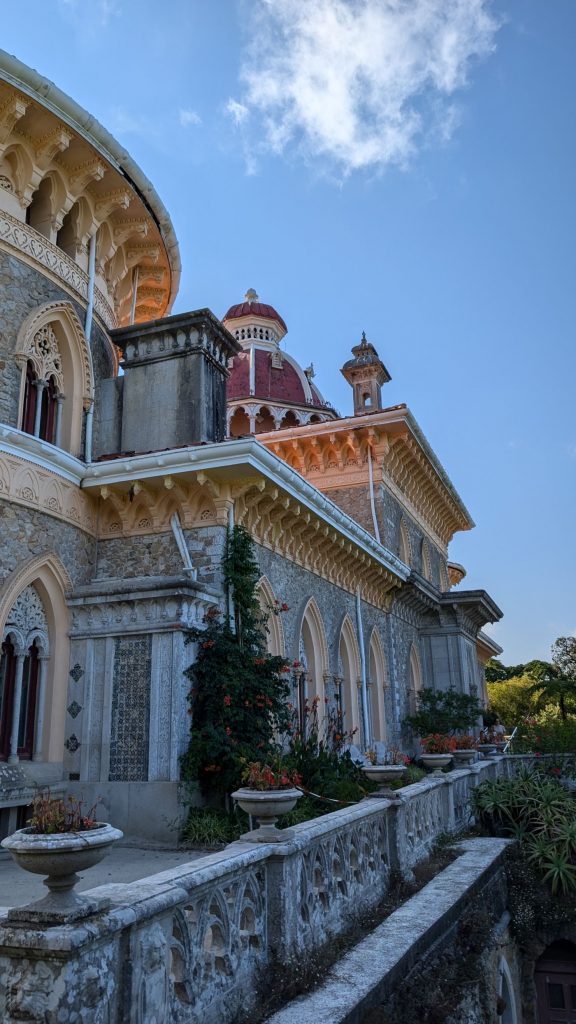

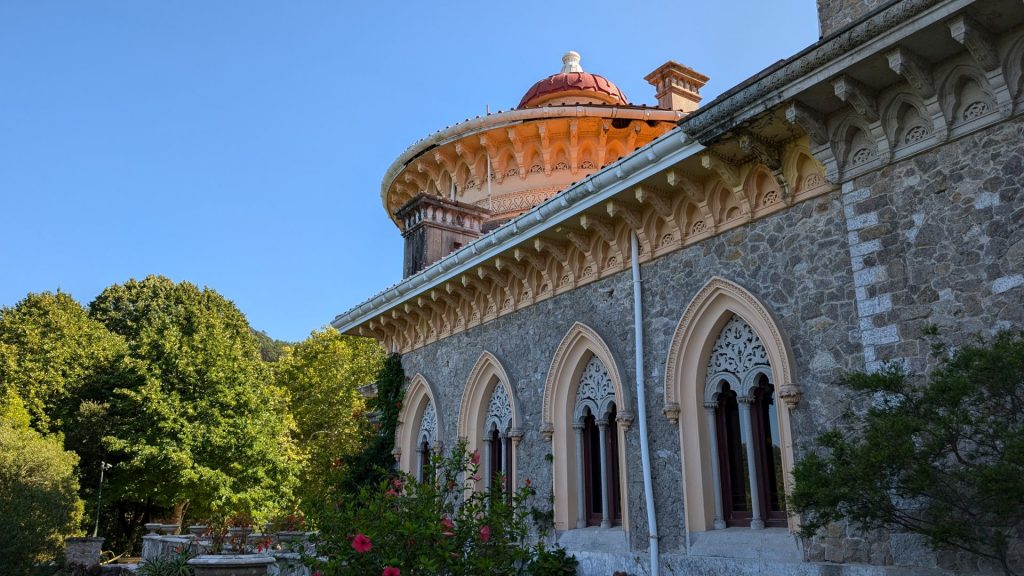


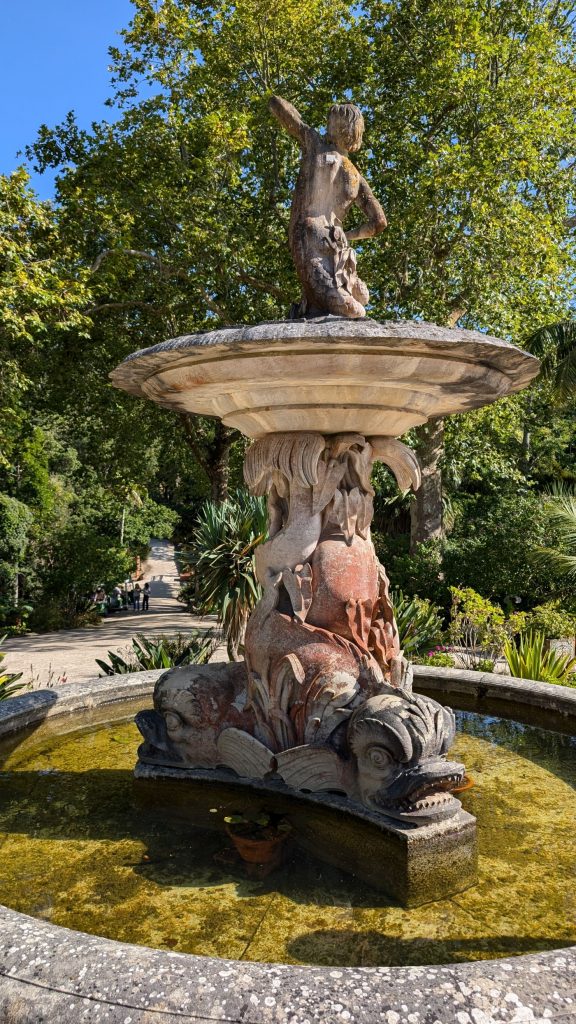

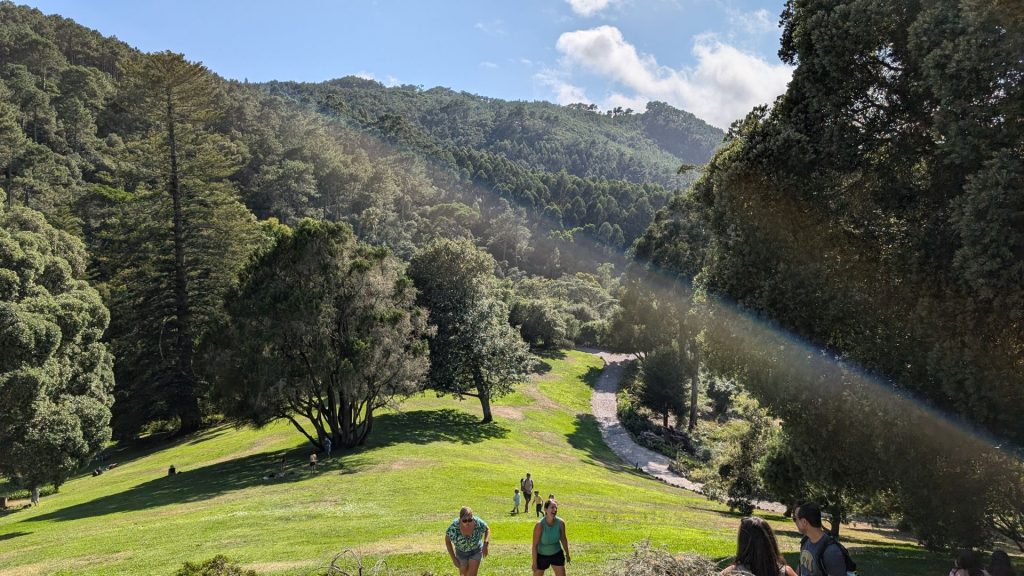
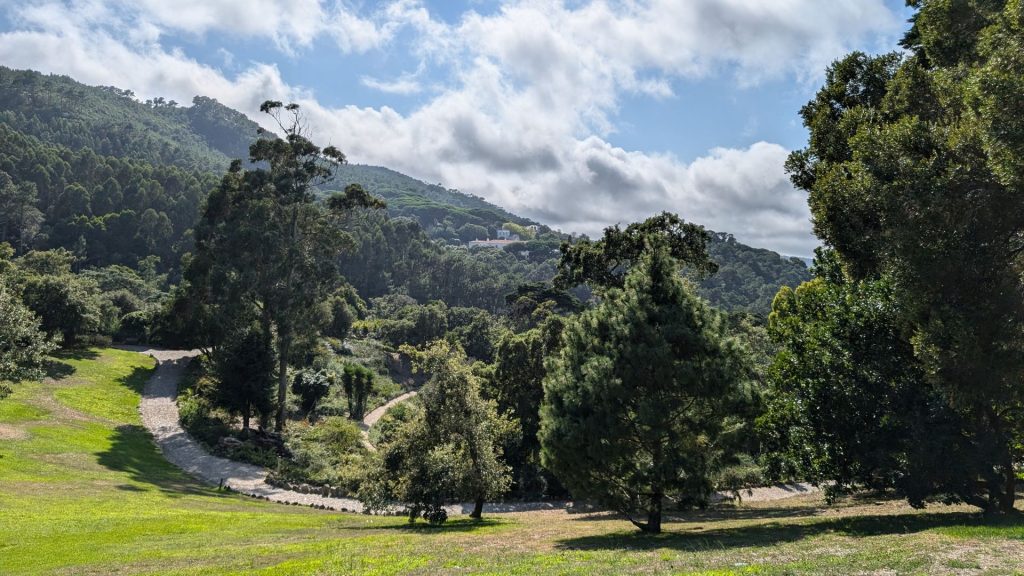
Let’s look at a bit of the interior, then end with pictures of some of the beautiful and lush grounds.
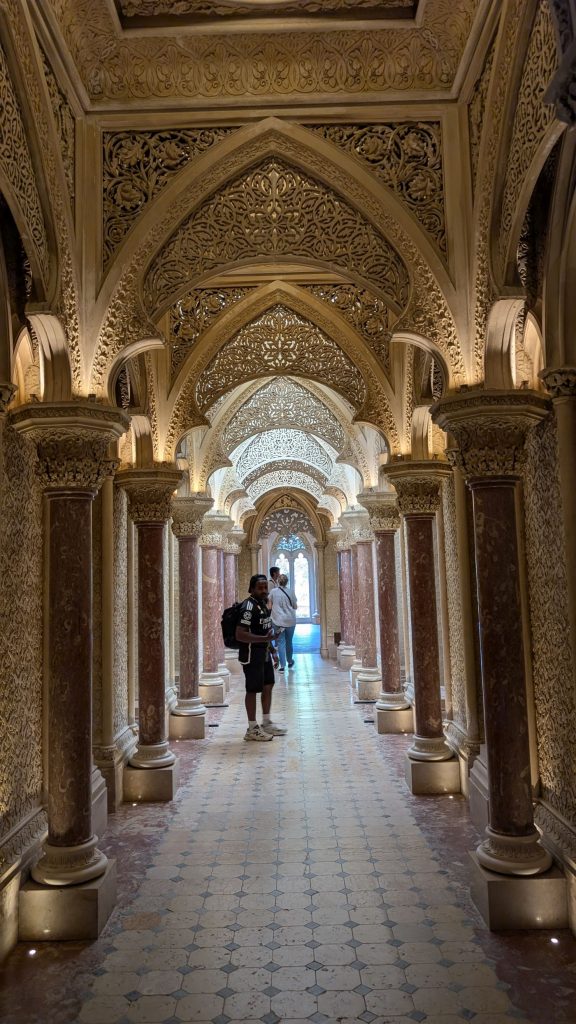
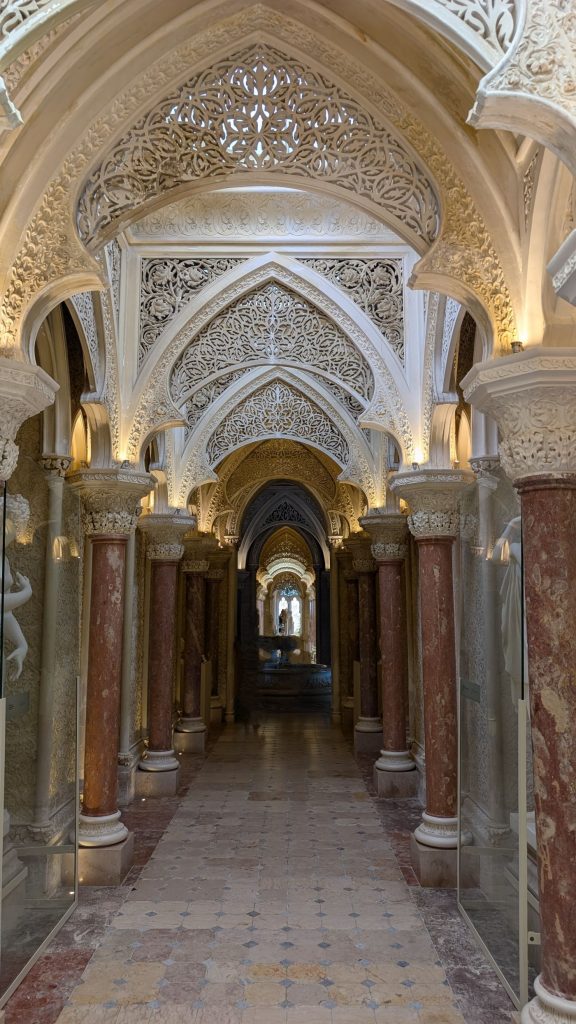
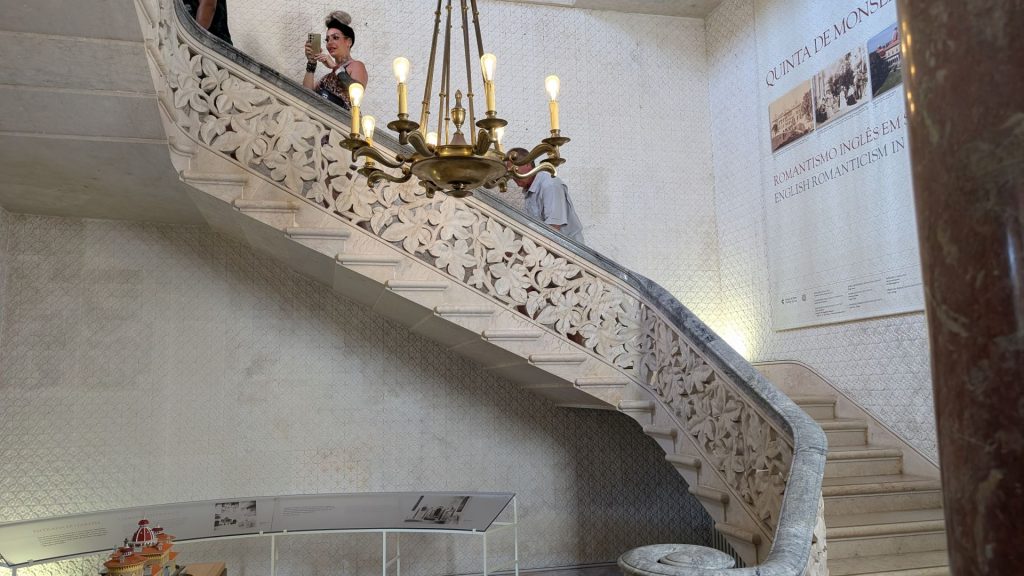

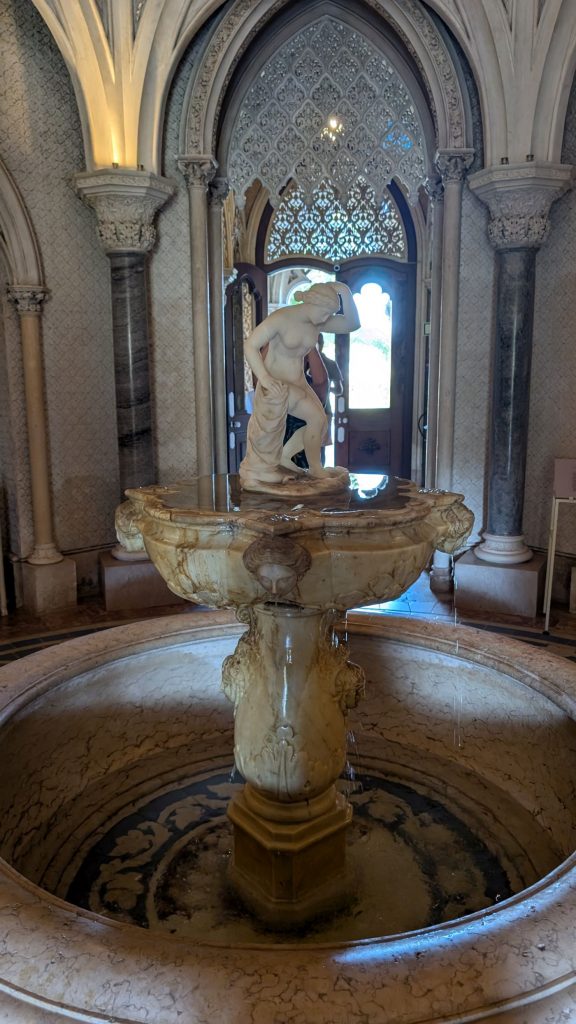








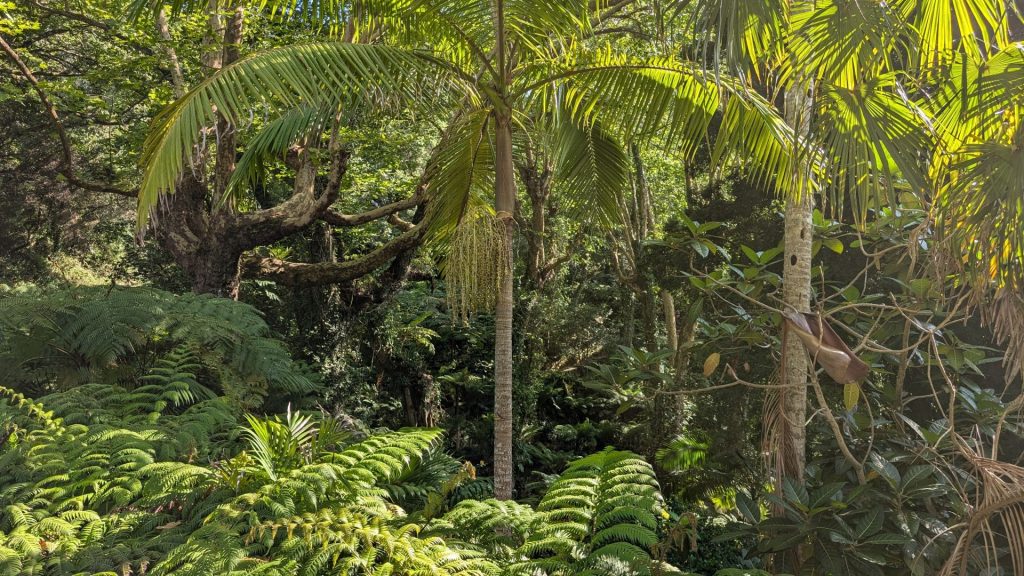

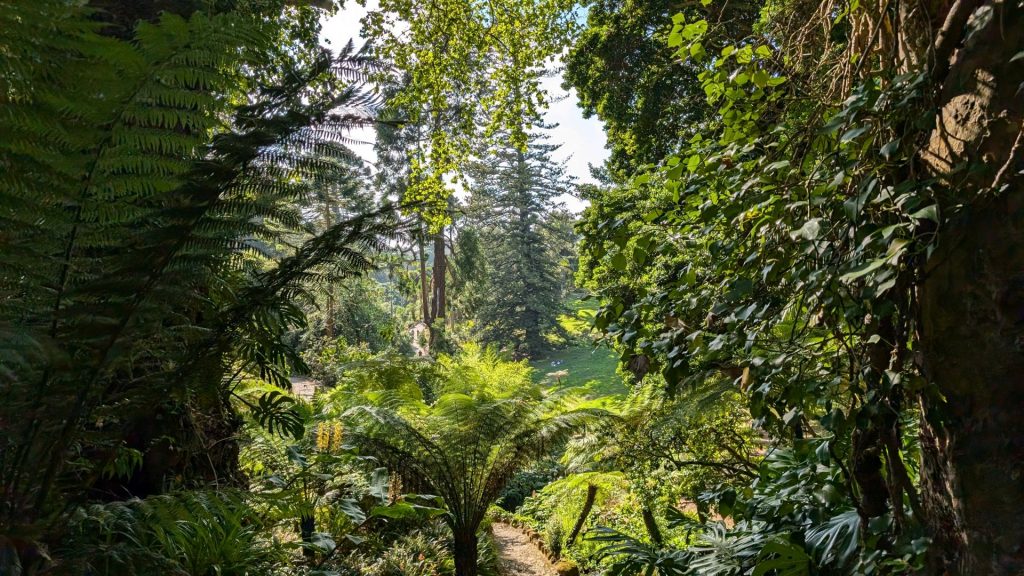

It was a long, tiring and wonderful day! I’d walked over 26,000 steps by the time I hit the sack.
